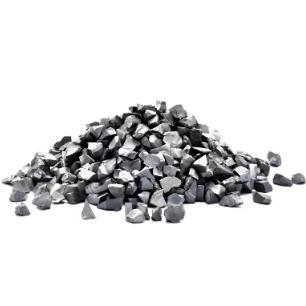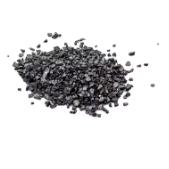**Title: Sparkle Secrets: How to Revive Your Brass Plated Metal Treasures**
(How To Clean Brass Plated Metal)
**1. What Exactly is Brass Plated Metal?**
Brass plated metal isn’t solid brass. Think of it like a thin, shiny coat of brass paint. Manufacturers apply a microscopic layer of real brass onto a base metal. This base is usually cheaper, like steel or zinc. The brass layer gives the beautiful golden look people love. Brass plating saves money compared to making the whole item from solid brass. It achieves that classic brass appearance without the solid brass price tag. The plating can be thick or thin. Thicker plating generally lasts longer. Understanding this coating is key to cleaning it right. Mistreat it, and you risk damaging that delicate brass surface. You might expose the dull metal underneath. That ruins the look completely.
**2. Why Brass Plated Metal Needs Special Cleaning Care**
Brass plating is beautiful but vulnerable. It’s much thinner than solid brass. Harsh cleaners or rough scrubbing can strip it right off. Once the plating wears through, the base metal shows. This often looks patchy and unattractive. You can’t plate it back at home. Acidic substances like vinegar or lemon juice, popular for solid brass, are too aggressive. They can eat into the thin brass layer quickly. Abrasive powders or steel wool are definite enemies. They scratch and remove the plating. Normal wear and tear happen. Tarnish is common. Tarnish is that dull, sometimes greenish film. It forms when brass reacts with air and moisture. Cleaning brass plated items requires gentleness. You need methods that remove tarnish without harming the plating itself. Treat it wrong, and you lose the shine forever.
**3. How To Clean Brass Plated Metal Safely (Step-by-Step)**
Forget harsh chemicals. Gentle is the rule. Here’s the safest way:
1. **Dust First:** Wipe the item with a soft, dry cloth. Remove loose dirt and dust. This prevents scratching later.
2. **Mild Soap Bath:** Mix a few drops of mild dish soap into warm water. Dampen a second soft cloth (microfiber is great) in this solution. Wring it out well. It should be damp, not dripping wet. Excess water can seep under plating.
3. **Wipe Gently:** Carefully wipe the brass plated surface. Follow the direction of any patterns or grooves. Apply light pressure only. Focus on tarnished areas.
4. **Rinse (Optional but Careful):** If you used soap, quickly rinse the cloth in clean water. Wring it extremely well. Wipe the surface again to remove any soap residue. Minimize water contact. Alternatively, skip rinsing and dry thoroughly immediately after step 3.
5. **Dry Immediately:** This is crucial. Use a completely dry, soft, lint-free cloth. Buff the item dry right away. Don’t let water air dry on the surface. Water spots or trapped moisture can damage the plating over time.
6. **Polish (Optional & Gentle):** Use a polish made specifically for plated metals or a tiny amount of non-abrasive liquid car wax on a soft cloth. Buff gently. Never use standard brass polish meant for solid brass. Test any polish on a small, hidden spot first.
**4. Where You Find Brass Plated Metal (Applications)**
Brass plating is everywhere! It offers that classic brass look affordably. Look for it in:
* **Home Decor:** Picture frames, lamp bases, drawer pulls, cabinet knobs, curtain rods, decorative figurines, candle holders, clock faces.
* **Furniture Hardware:** Table legs, bed frames (accents), chair accents, cabinet hinges (sometimes).
* **Musical Instruments:** Many instrument parts like trumpet valves, saxophone key guards, or trombone slides are often brass plated for cost and weight.
* **Vintage Items:** Older costume jewelry, belt buckles, trophies, badges, military insignia frequently used brass plating.
* **Automotive Trim:** Some classic car emblems, hood ornaments, or interior trim pieces might be brass plated.
* **Door Hardware:** Knobs, knockers, kick plates, mail slots often feature brass plating for its aesthetic appeal. Knowing an item is plated helps you choose the right cleaning approach from the start.
**5. Brass Plated Metal Cleaning FAQs**
**Q: Can I use ketchup or tomato sauce to clean brass plating?**
A: No. These are acidic. They might work on solid brass but risk damaging the thin plating. Stick to mild soap and water.
**Q: Is vinegar safe for brass plated items?**
A: Generally, no. Vinegar is too acidic for the delicate plating. It can cause discoloration or even strip the brass layer. Avoid it.
**Q: What if my brass plated item has heavy tarnish or green corrosion?**
A: Proceed very carefully. Try the mild soap method first. If green corrosion (verdigris) appears, use a cotton swab dipped in isopropyl alcohol on the spot only. Wipe immediately with a damp cloth and dry thoroughly. Heavy corrosion often means the plating is compromised. Aggressive cleaning likely makes it worse.
**Q: Can I use Brasso or other metal polishes?**
A: Not recommended. Most standard metal polishes contain abrasives or chemicals too strong for plating. They can scratch or remove the brass layer. Use only polishes specifically labeled safe for plated metals, or skip polishing altogether.
**Q: How often should I clean brass plated items?**
A: Clean only when needed. Frequent cleaning, even gently, adds wear. Dust regularly with a dry cloth. Clean with soap and water only when you see visible tarnish or fingerprints. Less cleaning means longer life for the plating.
**Q: The plating is wearing off in spots. Can I fix it?**
A: Proper re-plating requires professional electroplating services. It’s not a DIY fix. Once plating wears through significantly, the only home options are careful cleaning to preserve the remaining plating or accepting the look. Painting over it is possible but changes the appearance completely.
**Q: Why does brass plating tarnish faster sometimes?**
(How To Clean Brass Plated Metal)
A: Exposure is key. Items in humid environments (bathrooms, kitchens) or handled frequently (door knobs) tarnish quicker. Air pollution and skin oils also accelerate tarnishing. Keeping items dry and dusted helps slow it down. Brass plating isn’t being difficult; it’s just reacting to its environment like any metal would.
Inquiry us
if you want to want to know more, please feel free to contact us.


